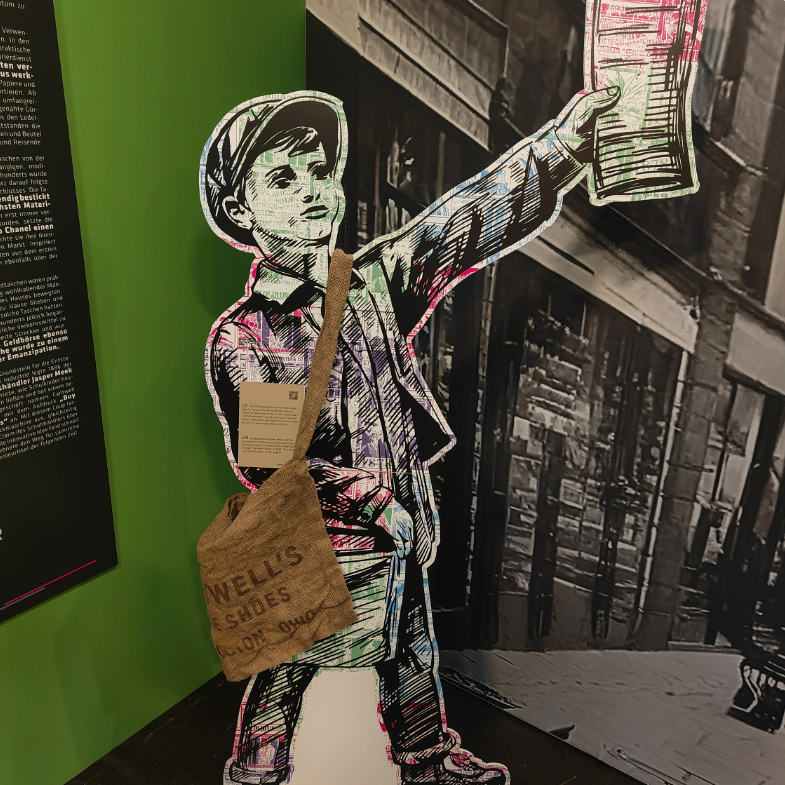The journey from the earliest leather bags to today’s status symbol, luxury goods, and innovative advertising mediums has been a long one. Even Ötzi, from the late Stone Age, carried a leather pouch, the oldest form of a bag. These simple pouches are still in use today, and they haven’t lost their functionality over several thousand years.
The ancient Romans stored their valuables in the “pera,” the ancient precursor of today’s bags. Although only a few leather artifacts from that time have survived, depictions on the Trajan’s Column in Rome provide insights into the ancient world of bags. These reliefs show the “loculus,” a leather sack stretched with the help of a wooden frame and carried over the shoulders of Roman legionaries. This backpack had enough space for the soldiers’ provisions and marching gear.
Another variant of ancient bags is the “marsupium,” a simple piece of fabric or circular-cut leather closed at the edge with a drawstring. Bags were not yet fashion accessories but were primarily used by men in the business and military sectors. However, they were often adorned with intricate embroidery and jewelry to showcase social status and wealth.
Since the Middle Ages, the use of bags began to diverge: into fashion items for women and practical accessories for men. The first courier service started in the Renaissance, and messengers used sturdy bags made of tool-bound leather to transport papers and money between banks. From the 16th century, women wore extensive dresses with lots of fabric – and attached waist bags under their skirts. Men’s leather pouches, on the other hand, evolved into today’s wallets. At that time, only peasants and travelers carried large bags and pouches.
It wasn’t until around 1800 that bags became independent, fashionable items separate from clothing. In the mid-19th century, the metal frame was invented, shortly followed by the invention of the clasp closure. Bags from this era were elaborately embroidered and made from various materials. After initially becoming more ornate and impractical, the pragmatic Coco Chanel marked a turning point. In 1955, she introduced her iconic shoulder bag, inspired by the bags worn by soldiers in World War I, who also carried their bags over their shoulders.
In addition to fashionable handbags, practical models were a privilege of affluent men who moved outside the home, while women mostly stayed at home and had no need for such bags. However, towards the end of the 19th century, women began to use public transportation, travel long distances, and became more independent. The wallet, as well as the travel bag, became a symbol of female emancipation.
A significant foundation for the emergence of the advertising industry was laid in 1886 by the ingenious newspaper vendor Jasper Meek from Ohio. He observed how schoolchildren often dropped their books and then offered bags with the imprint “Buy Cantwell Shoes” to a friend’s shoe store named Cantwell. With this move, he relieved his printing press, and at the same time, the shoe store’s slogan spread throughout the city. The innovative idea quickly found imitators and paved the way for all the printable promotional items of the times.








